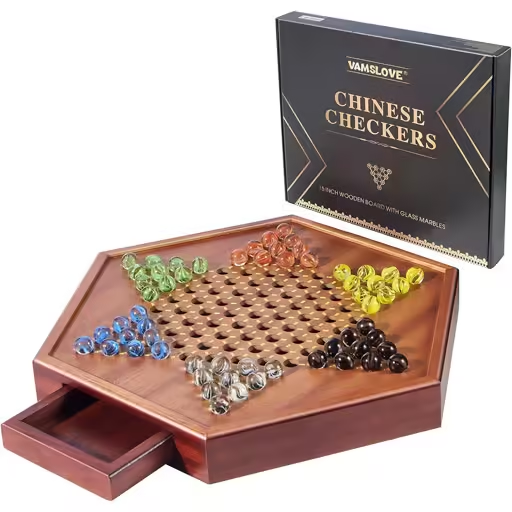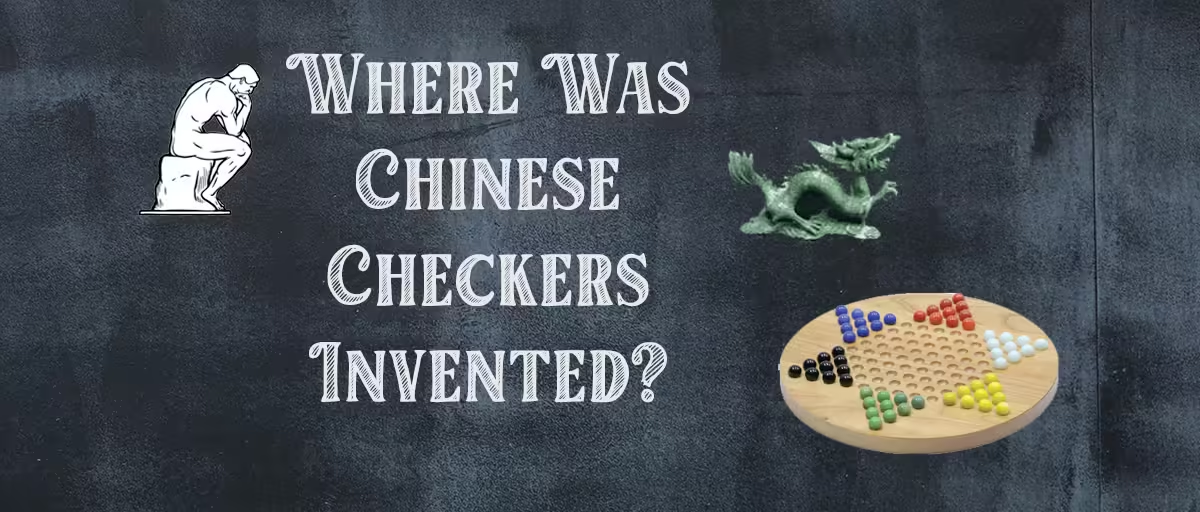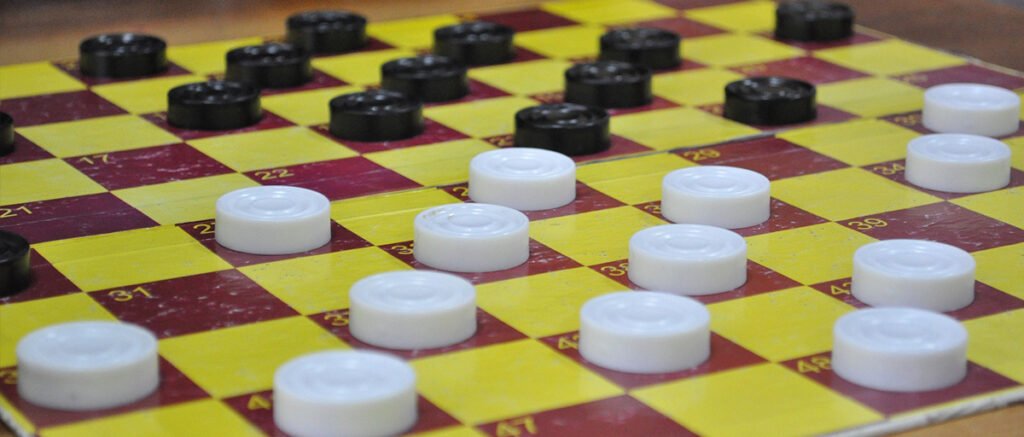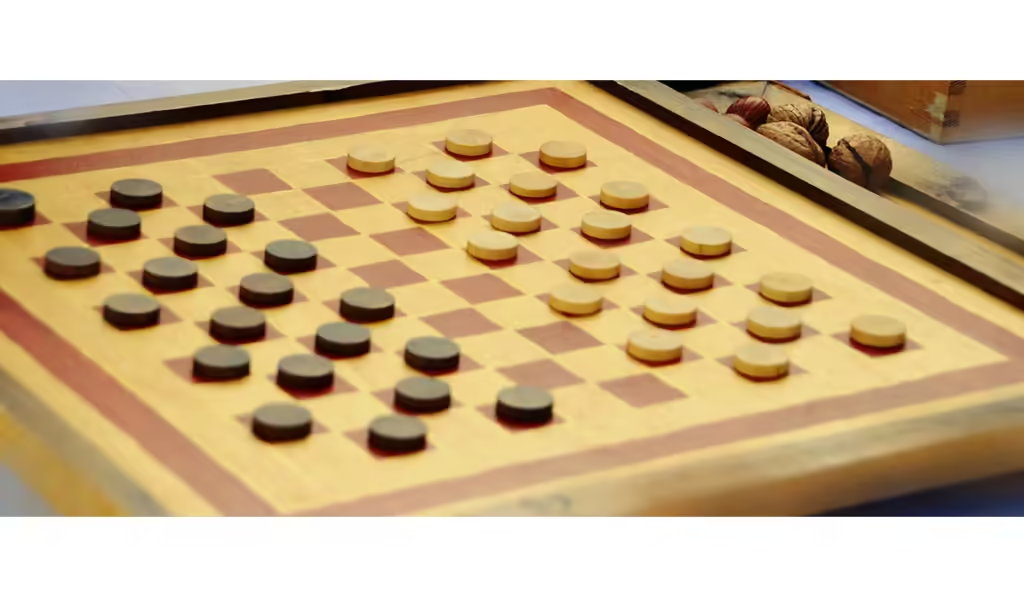Chinese Checkers, despite its name, did not originate in China. This popular board game has a fascinating history that traces back to a different part of the world. In this article, we will explore the origins of Chinese Checkers, its evolution, and how it became a widely enjoyed game worldwide.
Table of Contents
A Brief Overview of Chinese Checkers
Chinese Checkers is a strategy game that can be played by two to six players. The objective is to move your pieces across the game board into the opposite corner using strategic hops over other players’ pieces. Although Chinese Checkers is commonly associated with China, it was actually invented in Germany in the late 19th century.
Chinese Checkers gained its popularity through its simple rules, engaging gameplay, and the ability to accommodate multiple players. It provides a unique combination of strategy and luck, making it a thrilling game for both children and adults. The game’s objective of moving pieces across the board adds an element of challenge and excitement.
The Inventor: George Howard Monks

The credit for the invention of Chinese Checkers goes to an American surgeon and painter named George Howard Monks. In the year 1892, Monks patented a game called Halma in the United States. Halma, meaning jump in Greek, served as the foundation for what would later become Chinese Checkers.
George Howard Monks was not only a skilled surgeon but also a creative mind who enjoyed artistic pursuits. His passion for painting and innovation led him to create Halma, a game that would eventually evolve into Chinese Checkers. Monks’ invention showcased his ability to combine strategy, logic, and creativity.

The Halma Connection
Halma, the predecessor of Chinese Checkers, was created by Monks as a variation of an English game called Hoppity, another invention by Monks. Hoppity involved jumping over pegs on a square board, much like Checkers. Monks refined and expanded upon Hoppity, changing the board shape and introducing new rules, ultimately resulting in the game of Halma.
Monks’ innovation didn’t stop with Halma. He took inspiration from Hoppity and added his own unique twists to create a game that would capture the attention of players worldwide. By modifying the board shape and introducing new rules, Monks transformed Hoppity into a game that would later be known as Chinese Checkers.

The Journey to China
It wasn’t until the 1920s that Halma made its way to China. The game’s rules and mechanics were altered slightly to cater to Chinese traditions. The square board was transformed into a star-shaped board, allowing for more players and a different style of gameplay. The game’s popularity grew rapidly in China, and it was during this time that it earned the name we know today: Chinese Checkers.
The introduction of Halma to China marked a significant milestone in the game’s history. The modifications made to the board shape and gameplay mechanics allowed for a more inclusive and dynamic experience. The star-shaped board became a visual representation of the game’s evolution and cultural adaptation.
Misleading Name and Cultural Significance
Although Chinese Checkers became synonymous with the game outside of China, the name itself is somewhat misleading. The game has no connections to traditional Chinese board games like Go or Mahjong. However, the game’s popularity in China cannot be denied, and it has become an essential part of Chinese culture, particularly during the festive season of Chinese New Year.
Chinese Checkers’ cultural significance in China goes beyond its misleading name. It has become a beloved pastime during Chinese New Year celebrations, bringing families and friends together. The game’s colorful and vibrant board adds to the festive atmosphere, creating a sense of joy and camaraderie among players.
Worldwide Recognition and Enduring Appeal
Chinese Checkers gained worldwide recognition in the 1930s when a number of board game manufacturers began producing and distributing the game internationally. Its simple rules, engaging gameplay, and the ability to accommodate multiple players made it an instant hit among both children and adults.
The enduring appeal of Chinese Checkers can be attributed to several factors. Firstly, its accessibility makes it easy for players of all ages to learn and enjoy. The strategic depth of the game provides a challenge that keeps players coming back for more. Additionally, the social aspect of playing with friends and family adds to its appeal, creating memorable moments and bonding experiences.
Today, Chinese Checkers continues to be enjoyed by millions of people around the globe. Its enduring popularity is a testament to its timeless appeal and the enjoyment it brings to players of all backgrounds. Whether it’s a casual game night or a competitive tournament, Chinese Checkers remains a beloved classic in the world of board games.
How to Play Chinese Checkers
Now that we have explored the origins and significance of Chinese Checkers, let’s take a look at the basic rules and gameplay:
- Objective: The goal of Chinese Checkers is to be the first player to move all of your pieces from your corner of the star-shaped board to the opposite corner. Each player aims to strategically navigate their pieces across the board while hindering their opponents’ progress.
- Setup: Each player chooses a corner of the star-shaped board and places their colored pieces in the ten holes of that corner. The board consists of a star-shaped pattern with multiple holes for each player to occupy.
- Movement: Players take turns moving one of their pieces in a straight line, either to an adjacent hole or by hopping over another player’s piece. Multiple hops can be made in a single turn, allowing for strategic advancement across the board.
- Capturing: If a player’s piece is adjacent to another player’s piece, they can jump over it, capturing it and removing it from the game. Capturing an opponent’s piece not only eliminates their presence on the board but also creates potential strategic advantages.
- Strategy: The key to winning Chinese Checkers is to create a path that allows for efficient movement of your pieces across the board, while also hindering your opponents’ progress. Planning ahead and anticipating your opponents’ moves is crucial for success.
By following these rules and employing strategic thinking, players can experience the thrill and excitement of Chinese Checkers.
Conclusion
Chinese Checkers, despite its misleading name, has a rich and captivating history. From its origins in Germany as Halma to its transformation in China and subsequent worldwide popularity, the game has become a staple in homes and game nights worldwide. Its strategic gameplay and colorful board continue to attract players of all ages, making Chinese Checkers a timeless classic in the world of board games.
FAQ
1. Where did Chinese Checkers originate?
Chinese Checkers was actually invented in Germany in the late 19th century, not in China.
2. Who invented Chinese Checkers?
The credit for the invention of Chinese Checkers goes to George Howard Monks, an American surgeon and painter.
3. What was the predecessor of Chinese Checkers?
The predecessor of Chinese Checkers was a game called Halma, which was created by George Howard Monks as a variation of an English game called Hoppity.
4. How is Chinese Checkers played?
The objective of Chinese Checkers is to be the first player to move all of your pieces from your corner of the star-shaped board to the opposite corner. Players take turns moving their pieces in a straight line, either to an adjacent hole or by hopping over another player’s piece. The game involves strategic thinking and planning ahead to create an efficient path while hindering opponents’ progress.
Affiliate Disclosure
Some of the links on Draughts.biz are affiliate links. This means that we may earn a small commission if you click through and make a purchase, at no additional cost to you. Please note that our product reviews and roundups are independent, and the affiliate relationships do not influence our content in any way.
Draughts.biz is a participant in the Amazon Services LLC Associates Program, an affiliate advertising program designed to provide a means for sites to earn advertising fees by advertising and linking to Amazon.com.
Amazon and the Amazon logo are trademarks of Amazon.com, Inc. or its affiliates.
Our passion for board games extends far beyond the checkers board. We’ll be your trusted companion, on a journey through the enchanting realms of not only checkers (or draughts) but also chess, backgammon, dominoes, mahjong, and a diverse array of other captivating board games.
Whether you’re in search of the ideal chess set, the best chess books, a chinese checkers set, a checkers set, or if you’re seeking the excitement of a thrilling game of mahjong solitaire, we’ll guide you along the way. In partnership with our affiliates, we bring you an extensive selection of board games and past times to explore and enjoy.
Dive into our extensive collection of guides and reviews, and unlock the joy and exhilaration that board games offer. From exquisitely crafted game pieces to the essential accessories that elevate your gaming experience, we’re here to guide you through it all with ease and delight.
Join us in celebrating the timeless allure and camaraderie that these games nurture, one post at a time!




